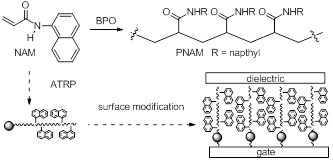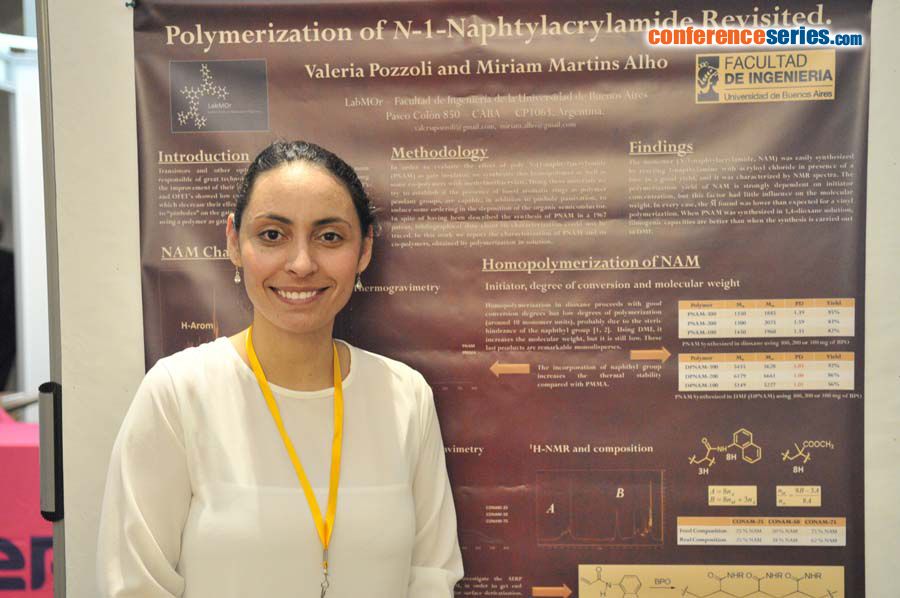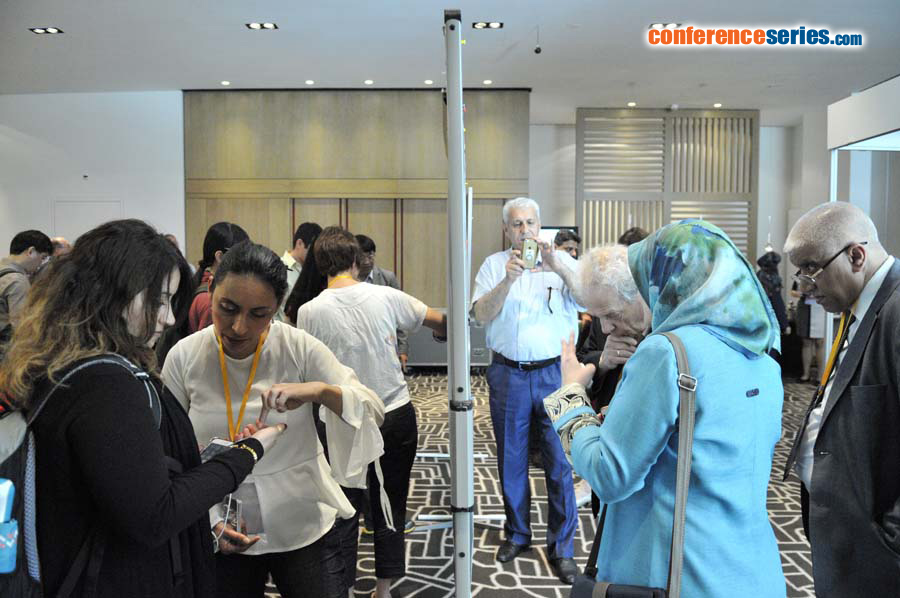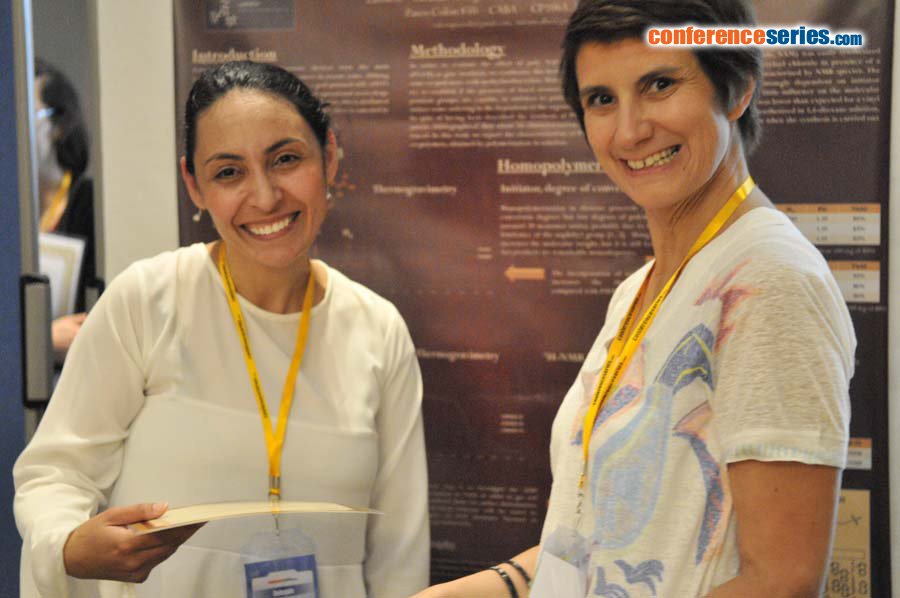
Valeria Pozzoli
University of Buenos Aires, Argentina
Title: Polymerization of N-1-naphtylacrylamide revisited
Biography
Biography: Valeria Pozzoli
Abstract
Statement of the Problem: Transistors and other optoelectronic devices are mainly responsible for the great technological advances in recent years. Although, the improvement of their performances is a goal pursued still. Organic thin-film transistor (OTFT’s) and organic field-effect transistor (OFET’s) showed low carrier mobility and operational overvoltage which decrease their effectiveness and, in many cases, this is attributed to “pinholes” on the gate-dielectric interface. This effect is canceled by using a polymer as gate insulator.
Methodology & Theoretical Orientation: In order to evaluate the effect of poly N-(1-naphtyl)acrylamide (PNAM) as gate insulator, we synthesize this homopolymer as well as some co-polymers with methyl methacrylate. Using these materials we try to establish if the presence of fused aromatic rings as polymer pendant groups, are able, in addition to pinhole passivation, to induce some ordering in the deposition of the organic semiconductor. In spite of having been described the synthesis of PNAM in a 1967 patent, bibliographical data about its characterization could not be traced. In this work we report the characterization of PNAM and its co-polymers, obtained by polymerization in solution.
Findings: The monomer (N-1-naphtylacrylamide, NAM) was easily synthesized by reacting 1-napthylamine with acryloyl chloride in presence of a base in a good yield, and it was characterized by NMR spectra. The polymerization yield of NAM is strongly dependent on initiator concentration, but this factor had little influence on. In every case, the found was lower than expected for a vinyl polymerization. When PNAM was synthesized in 1,4-dioxane solution, filmogenic capacities are better than when the synthesis is carried out in DMF.
Conclusion & Significance: Even when this polymer is cited in many patents for technological applications, this is the first characterization informed. At this moment, we are testing ATRP polymerization techniques of NAM in order to get end functionalized PNAM for surface gate modifications.
Synthetic scheme of PNAM and final goal of this work






